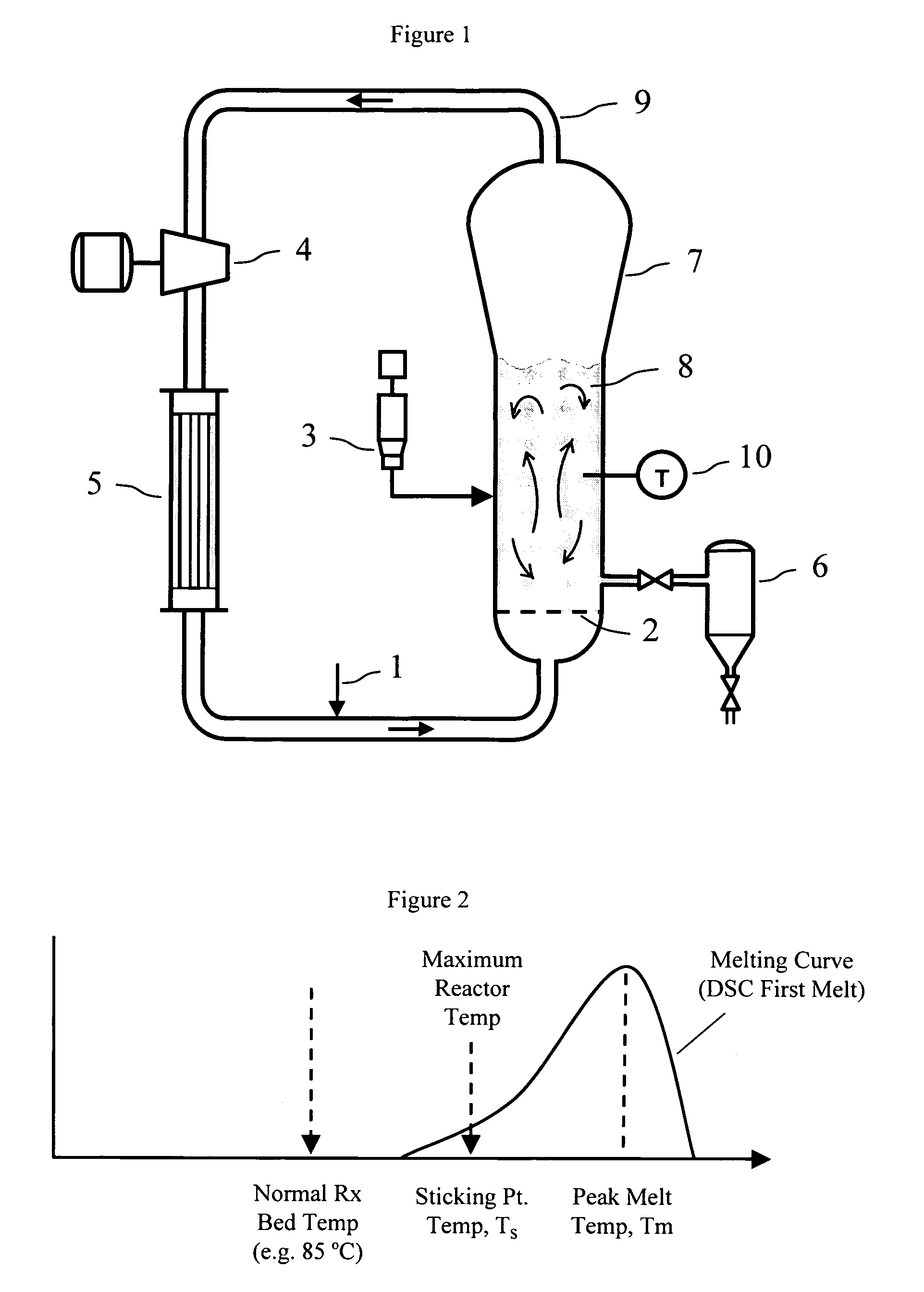Polymerization process
a polymerization process and gas phase technology, applied in the field of gas phase polymerization process, can solve the problems of ineffective operation of various reactor systems, difficult to meet the needs of gas phase process, and new challenges, and achieve the effect of improving the efficiency of the gas phase process
- Summary
- Abstract
- Description
- Claims
- Application Information
AI Technical Summary
Benefits of technology
Problems solved by technology
Method used
Image
Examples
examples
[0242]In order to provide a better understanding of the present invention including representative advantages thereof, the following examples are offered.
[0243]Density was measured in accordance with ASTM-D-1505-98
[0244]Melt Index (MI), 121 and 12 were measured by ASTM D 1238-01. DSC Peak melting point was measured as follows: 3 to 9 milligrams of granular polymer sample was charged into a 30 microliter, aluminum, hermetically sealed capsule (Perkin Elmer part Number B0182901), weighed, and placed on the test stage of a DSC instrument. As is standard practice in the DSC technique, a blank capsule was also placed on the reference stage. (If the test was to be done in the presence of liquid, the test capsule was also charged with the liquid prior to closing, or sealing, the capsule.) The DSC instrument was programmed to start each test by first ramping down the temperature (of both capsules) at a rate of 5° C. / min until reaching 0° C., and holding at this temperature for 2 minutes. Th...
examples 1 – 3
Examples 1–3
[0249]A series of tests were performed on polymer samples to determine the Critical Temperatures for selected polymer solvent combinations.
[0250]In the following examples, the dry sticking temperature was measured by one or both of two methods. The first method involved fluidizing the polymer sample in a medium scale fluidized bed reactor system. (This method is referred to as the medium scale fluidization test). Tests conducted by this method were performed in a fluidized bed reactor equipped with a temperature control system, a differential pressure cell to monitor the polymer bed weight and quality of fluidization, and a GC analyzer for monitoring the gas composition. The reactor consisted of a cylindrical bed section of 15.2 cm diameter and 117 cm height, with a conical expanded section increasing to 25.4 cm diameter at the top of the reactor. Gas entered the fluidized bed through a perforated distributor plate. For each test, the unit was charged with approximately ...
example 1
[0253]In this example the critical temperature was determined for a commercial grade linear low density polyethylene sample produced from a conventional-type transition metal catalyst as described in Example A (below) with a hexene comonomer. The polymer 12 was 0.768 dg / min and the molded density was 0.9173 g / cc. The peak DSC melting point for the dry polymer was 125° C. and the melting point depression was measured as 18° C., 21° C., and 2° C. for isobutane, isopentane, and HFC-245fa, respectively. The polymer dry sticking temperature was determined to be 104° C. in both the medium scale fluidization test and lab scale fluidization test. In the medium scale fluidization test there was no indication from the differential bed pressure cell that quality fluidization was lost anytime during the temperature ramp-up; however, visual inspection of the reactor internals following the test showed polymer aggregates caked on the reactor walls approximately 0.5 cm thick. As calculated from th...
PUM
| Property | Measurement | Unit |
|---|---|---|
| bed temperature | aaaaa | aaaaa |
| bed temperature | aaaaa | aaaaa |
| bed temperature | aaaaa | aaaaa |
Abstract
Description
Claims
Application Information
 Login to View More
Login to View More - R&D
- Intellectual Property
- Life Sciences
- Materials
- Tech Scout
- Unparalleled Data Quality
- Higher Quality Content
- 60% Fewer Hallucinations
Browse by: Latest US Patents, China's latest patents, Technical Efficacy Thesaurus, Application Domain, Technology Topic, Popular Technical Reports.
© 2025 PatSnap. All rights reserved.Legal|Privacy policy|Modern Slavery Act Transparency Statement|Sitemap|About US| Contact US: help@patsnap.com

